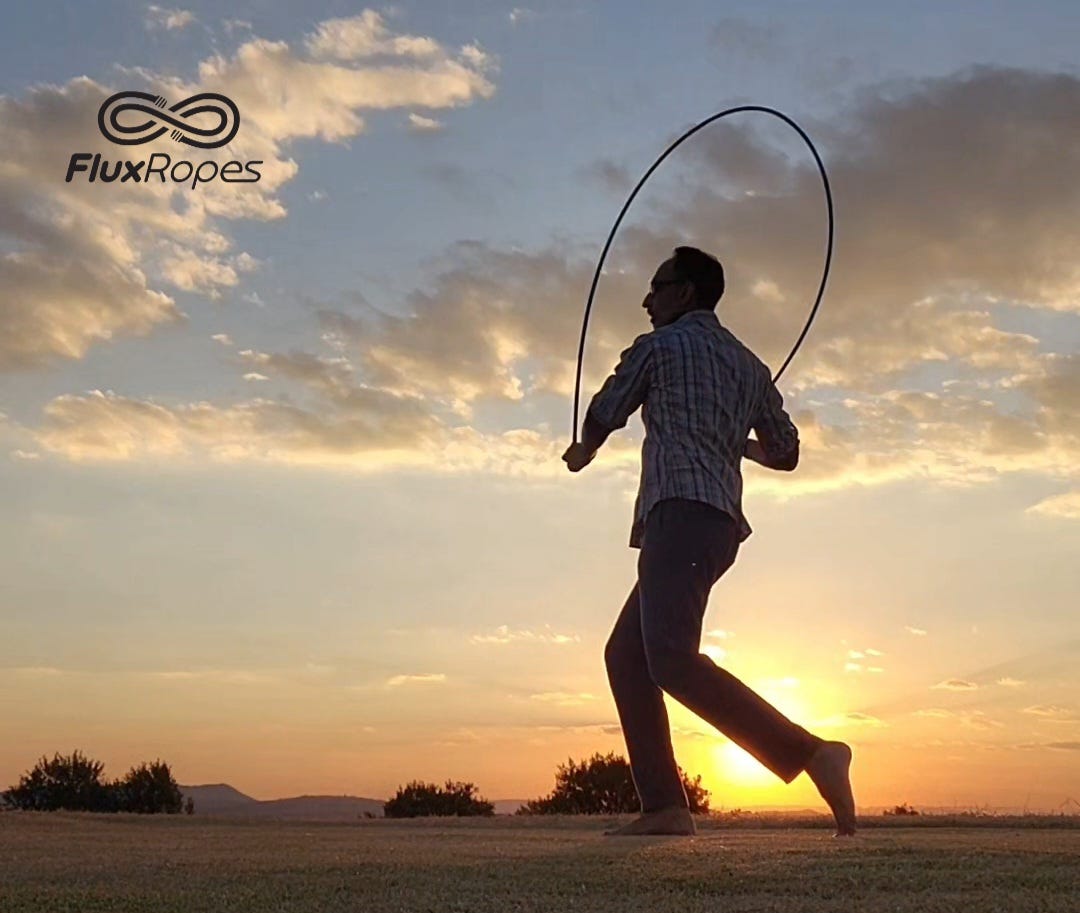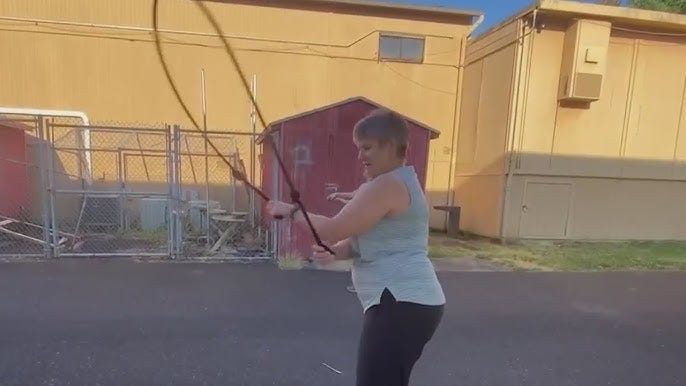Learn How to Flow Again
We're born with spines that move fluidly and effortlessly. Unfortunately, modern life quickly gets in the way. For most of us, our normal activities of daily living do not require the spine to be used to its capacity. In fact, even most people that exercise regularly are also not utilizing their spine to its full potential, with many often favoring the right or left arm. This results in one side of the spine, the body, and even the brain, to become dominant. Fortunately, the motion training of Rope Flow can help to restore the spine’s function and balance, which will also improve brain function.

While Rope Flow may seem simple, learning and performing this practice correctly and systematically is essential to allow you to achieve the best results. Learning any new skill requires consistent effort and practice. For most people in modern society, these movements won’t come naturally. However, those that persevere and commit to learn this movement practice will find it to be enjoyable and start to feel benefits fairly quickly.
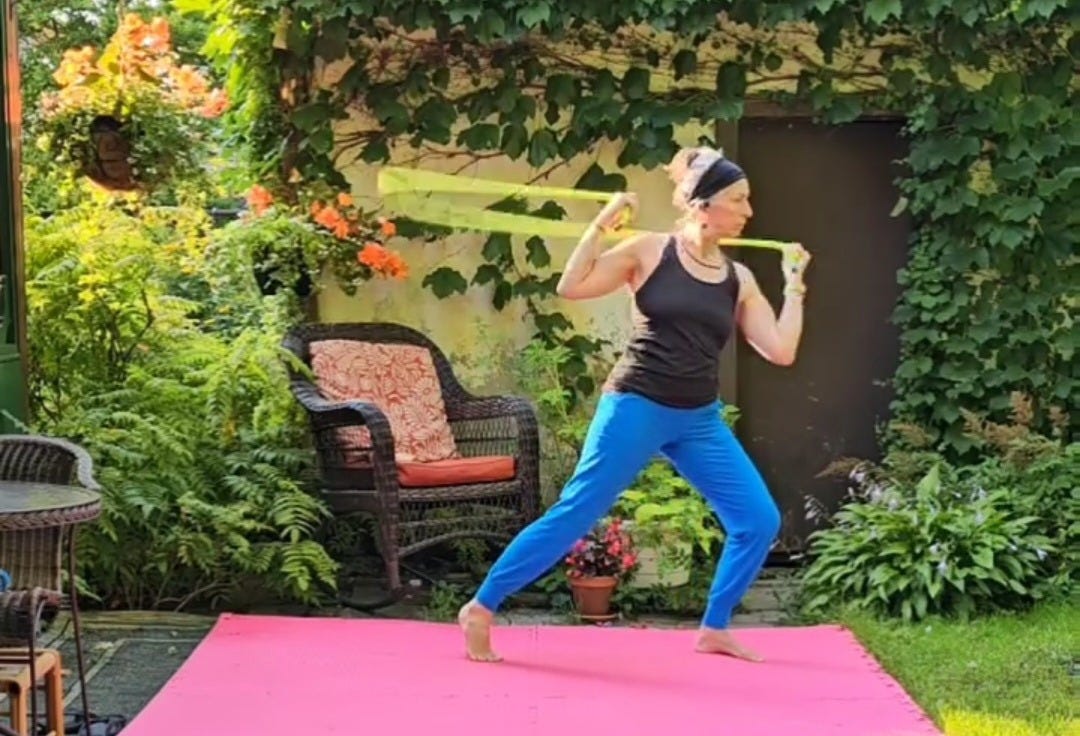
In fact, because its low impact, many people find it to be meditative and almost addictive initially, as your mind will enjoy the stimulation from these coordinated patterns with both hands and your whole spine. (Please see my previous article to learn why this happens.)
At the end of this article, I have listed 5 different online options for you to choose from to begin your Rope Flow practice. Keep in mind, however, this practice is only advisable if you have completed the Intensive and Corrective Phases of care. Please consult with your preferred health care provider to make sure you are ready for Rope Flow.
Based on my experience, here are nine recommendations that you must integrate to help make Rope Flow more effective and sustainable:
Your feet must be engaged for stability: As the rope is maneuvered around you, your feet play an integral function for the weight-shift that happens during Rope Flow. Simply put, they need to be active and engaged to maintain your balance. This means that you should be barefoot preferably, or using a shoe that allows your feet to be active and connected to the ground.
Activate your core muscles: Modern life revolves around sitting in chairs most of the day, which has resulted in core muscles that need to be reminded to stabilize the spine. This can be achieved by simply trying to pull your belly button toward your lower back, and is especially important when you start learning and the rope is not flowing freely.
“Bounce” with the beat of the rope: While Rope Flow does not require you to jump, it’s important to allow your body to rhythmically descend and rise with the rope. This is important, because it allows your feet and your spine to become more engaged with the flow of the rope, and lessens unnecessary strain on your shoulders. This is often forgotten with beginners and, as more patterns are learned, this can easily fall by the wayside. This gentle bounce is an essential part of Rope Flow. See the short video linked below for more details:

ROPE FLOW // Beginners Tips from David Weck (2 min, 37 sec) Begin with the basic patterns: Underhand Figure 8 & Overhand Figure 8. Start with one hand at a time, then do the same with both hands holding the rope handles together, and then separate the two handles. Try to do the Underhand patterns more often to help mitigate the effects of our sitting lifestyles to improve your posture.

Video: Rope Flow - 1H Underhand Figure 8 (56 sec.) Understand and respect the Cardinal Laws: Moving your feet and changing the direction you’re facing is an important component of the neurological benefits of Rope Flow. However, in order to do this smoothly, the rope needs to be in a flow state. This requires the rope to always be rolling in the same direction, while you are essentially moving around the flow of the rope, if you will. Please watch the short video below:
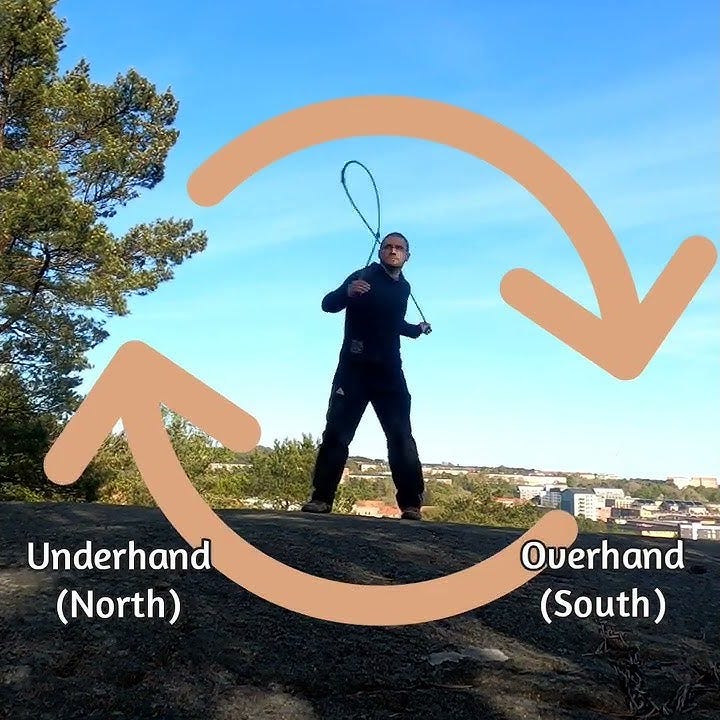
Video: Rope Flow - Respecting the Cardinal Directions (54 sec.) Allow your whole body to move the rope, not just your arms and shoulders: Just as in health care, the fitness industry has mechanized the body and focused on individual regions. For this reason, many will initially see Rope Flow as an exercise for the shoulders. Done correctly, Rope Flow also engages the spine and the whole body. When one starts learning, it will be mostly an arm and shoulder movement, but as you get more comfortable, the spine, the wrists, and the rest of body will join the party. When this happens, your brain will also be grateful.
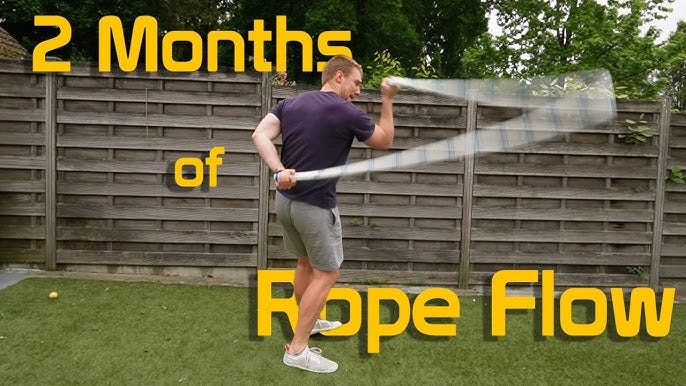
Video: What Makes Rope Flow So Much Fun To Learn? (6 min, 59 sec.) Let the flow of the rope guide you: As Tim Shieff mentions in his Rope Flow courses, the rope also serves as a feedback tool that “tells you when you’re not coordinated and rewards you when you are coordinated.” Incorrect movement or not focusing will result in the rope lashing or nipping you, thus essentially guiding you to move the rope properly, while remaining mindful. Allow this feedback to teach you how to move more fluidly.
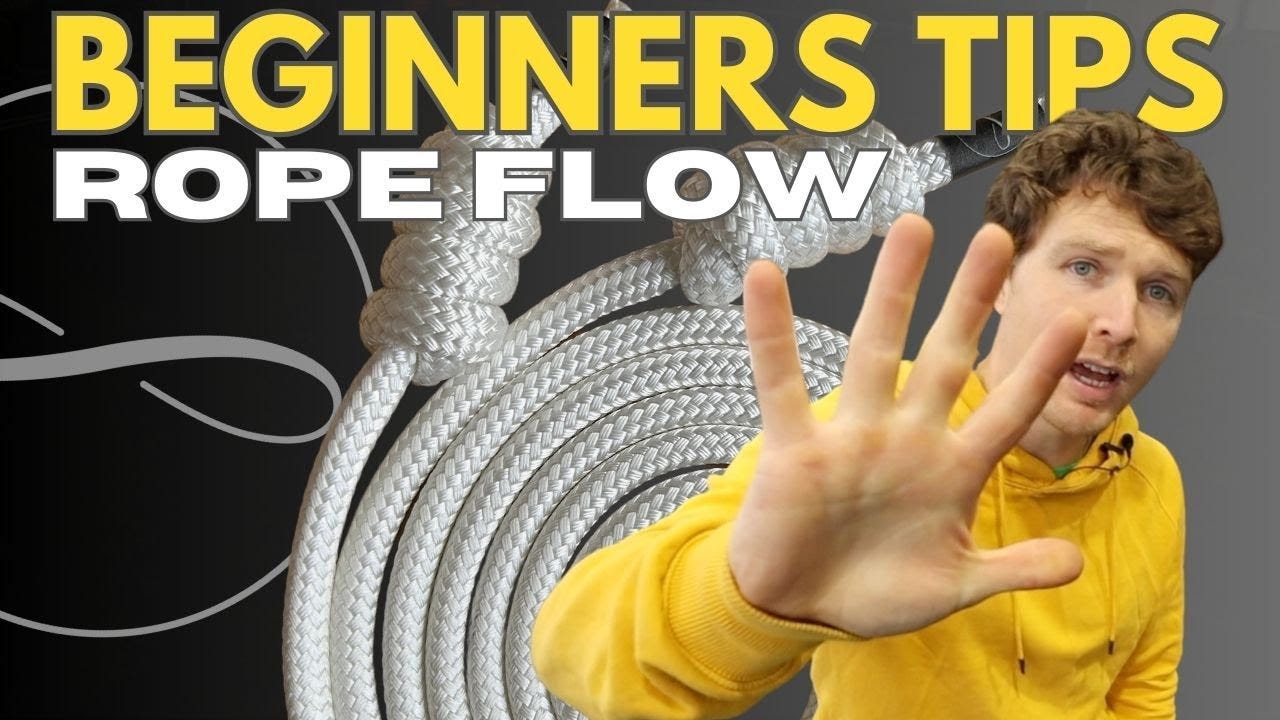
5 Tips for Rope Flow Beginners (8 min, 41 sec) Flow outdoors whenever possible: The best place to enjoy Rope Flow is outdoors. This may not always be possible, but you’ll see that you can flow more freely outside, without having to worry about knocking into an object, wall, ceiling, or even a pet. Also, with so many today being deficient in outside time, this is yet another way to reconnect with the Sun, the Earth, and the Air, and adds even more benefits. Try to practice Rope Flow outside at least once a week. You can also tell your friends about it and make it a social event. (See video below).
Dedicate 5 minutes a day to learning to flow again: Learn the basic patterns and set aside a few minutes daily to allow your brain and body to get accustomed to moving the rope around you. As you get more comfortable controlling the rope, you will likely be motivated to learn the more complex patterns. Every time you unlock a new pattern, it will feel like you’ve unlocked a new part of the brain. You will understand this when it happens to you.
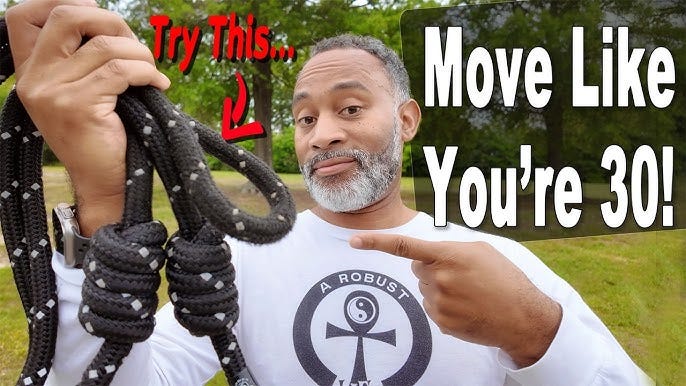
It’s important to note that you can still achieve benefits even by only doing the basic Underhand and Overhand Figure 8 patterns. For some people, Rope Flow may seem too complex, especially if you watch someone who has been flowing with the rope for years. For others it may seem too simplistic to have any major benefits. However, most people will realize that it’s certainly much harder that it looks and learning some of the movement patterns can be quite a mind-bender. This is what makes it so rewarding, though, because once you have managed to “unlock” a pattern, a different region of your mind, your spine, and your body is essentially awakened. Just give it a try. Your spine, body, and mind will be grateful.
by SJ NANA, DC, DrNana.co.za

Please see the recommended paid and free online courses below that will help you to begin your Rope Flow practice effectively:

Option 1: The Way of the Rope by Tim Shieff (Cost: £80.00)
Tim was a successful professional Parkour athlete in his 20’s in the U.K. He is passionate about helping people improve their biomechanics and began his Rope Flow journey in 2018 after studying under the creator, David Weck. This is the course that I completed and it’s laid an excellent foundation for me. While I wasn’t able to progress as quickly as 8 weeks, his course can be spread out depending on your fitness levels.
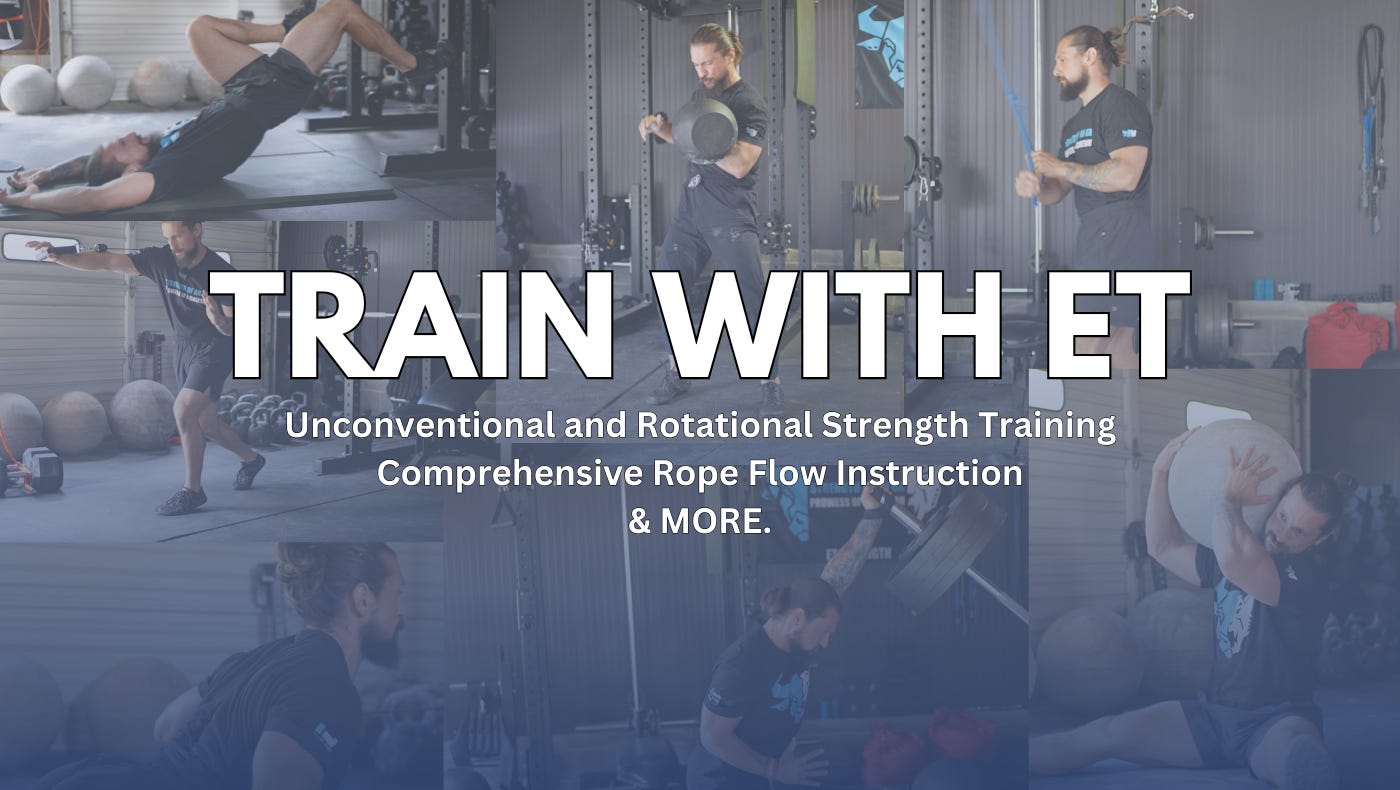
Option 2: ET Strength by Edward Troise (Cost: $149)
Edward is a fitness trainer from the U.S., with quite a different approach to getting stronger and more agile. His moto is: “Strength of an ox, prowess of a cheetah.” His course is quite comprehensive and may be better suited to those that are at least moderately fit. His instructions are very well-articulated and concise. I have also used his mini-tutorials to help me with the fine nuances required for Rope Flow.
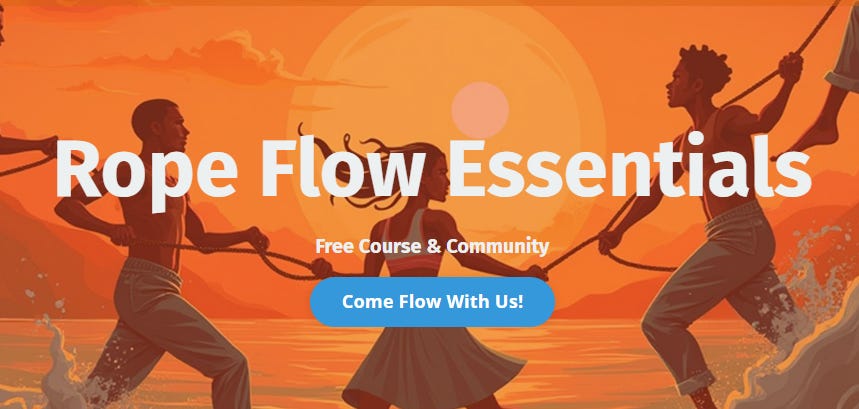
Option 3: Stronger Flow’s Rope Flow Essentials by Coach Amir West (Cost: Free)
Amir is an American movement coach that provides a free option to learn Rope Flow in a casual, yet very thorough way. While his course is cost-free from a monetary standpoint, it’s done very professionally. His unique way of teaching has helped me with some of the more complex patterns. He also maintains an interactive online community for people to share their experiences.

Option 4: S.ave O.ur S.pines by Anthony Ducker (@theropeflowguy) (Cost: Free)
Based in Australia, Anthony struggled with chronic back pain and stiffness for years, until he discovered Rope Flow. His goal is to save a million spines from what he calls the “Tin Man.” While he is quite a unique and entertaining character, his free 5-day follow-along course is simple and straightforward, focusing on the basic patterns, which will be sufficient for most people.

Option 5: yogijoflow (Joanne Giguère) and doc.jumps (Em) on Instagram
Since all of the above-mentioned courses are taught by men, I thought I should provide some free options from ladies that are also experts at Rope Flow. One is based in Canada and the other in Australia. They both have many excellent short videos that are easy to follow and concise. While these are not structured courses, they can still help you to learn the basic patterns, without any commitments. Since the male and female pelvic anatomy differ, I think most woman will also relate better to the females, as they certainly do move differently.
FINAL NOTE: With Rope Flow being new in South Africa, I am not able to recommend a local Rope Flow coach at this stage. I am hoping that this will change in the near future. If you think you might be interested, please let me know so you can begin the process of learning and then eventually teaching Rope Flow to others. You can also become a FluxRopes Affiliate, so you can provide flow ropes to your clients at discounted rates, receive coaching referrals, and other benefits.
Please see my other articles related to this topic:





